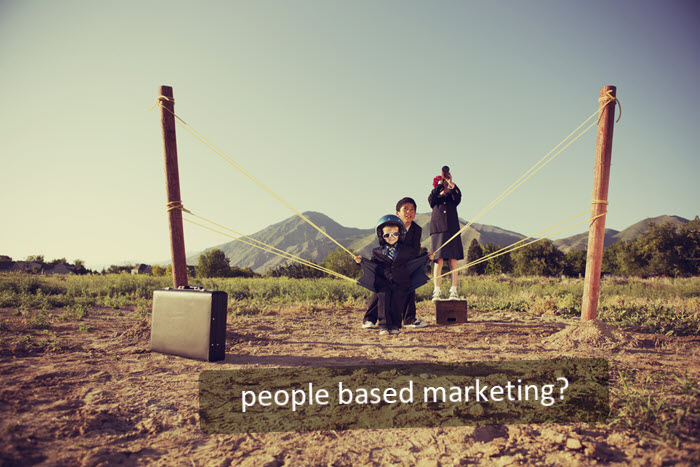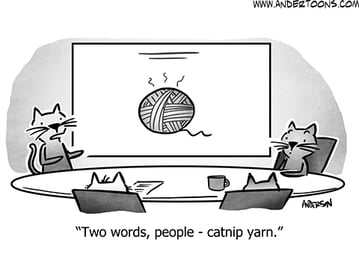
Think of how many ads you see each day — watching TV, streaming music, playing a mobile game. Could you add them all up? Do you remember what each one was for?
In America, the average person sees 4,000 to 10,000 ads per day. Even if each ad lasted only one second, that’s hours of brand-sponsored posts and messages.
Consumers are bombarded by videos for the latest fashions and social media posts touting lavish lifestyles. The pressure to buy more has led consumers to push back against traditional marketing methods.
Today, marketers must understand their audience to reach them. Modern consumers want authentic voices and personalized recommendations. They want a brand that understands who they are and the values they represent. That’s where people-based marketing comes in.
What Is People-Based Marketing?
People-based marketing is an advertising strategy that utilizes customer data collected from both offline and online resources. Think social media profiles, email addresses, website search history and more. Brands use this data to build rich customer profiles, designed to better understand audience wants and needs.
 When a brand understands its target audience, it can craft customized and engaging messages designed to accurately pinpoint a user’s interests. This personalized approach to marketing is more meaningful, as it provides consumers with something of value.
When a brand understands its target audience, it can craft customized and engaging messages designed to accurately pinpoint a user’s interests. This personalized approach to marketing is more meaningful, as it provides consumers with something of value.
Facebook was one of the first brands to attempt people-based marketing with its custom audiences’ tool. Brands use collected data to find a group of users who match a specific set of criteria on the social platform. When a business markets to a targeted set of people, their chances of conversion improve.
Once Facebook took the leap, platforms like Twitter, Google and Amazon quickly added similar audience customization tools.
How Does People-Based Marketing Work?
People-based marketing is a major disruptor in the traditional advertising world. Gone are the days where you blast an ad to millions, hoping the glue will stick. The people-based approach is all about delivering the right message to the right person at the right time.
The first step is data onboarding, collecting as much information about customers as possible. This could include email addresses, phone numbers, occupations, purchase history and more.
Then, this information is matched up to a digital device, like a smartphone, laptop or tablet. Once a marketing team knows which tool to look at, they can begin analyzing browsing habits and social media profiles.
The concept sounds scary — a business hoarding terabytes of personal information. However, data is anonymized to protect consumer identities while still offering helpful predictions to marketers. People benefit too, as they can see ads they’re interested in. According to one survey, 86% of consumers say personalization has an impact on what they purchase.
Before people-based marketing, a general audience profile might include women in their 20s who like to read. Today, you can directly market to Cheryl, an English literature major attempting to write a novel.
Amazon is at the top when it comes to personalized and predictive marketing. The e-commerce giant uses consumer data to deliver messages in real-time. When you visit the site, your homepage is personalized based on your browsing history and habits.
Of all Amazon customers, 44% admit to making a purchase from these recommendations.
What Is Account-Based Marketing?
 Account-based marketing is very similar to people-based marketing — however, companies advertise to other businesses instead of consumers (aka B2B). The process is personalized, precise and measurable, concentrating resources on a clearly defined set of target accounts.
Account-based marketing is very similar to people-based marketing — however, companies advertise to other businesses instead of consumers (aka B2B). The process is personalized, precise and measurable, concentrating resources on a clearly defined set of target accounts.
According to one study, 93% of B2B marketing leaders consider account-based marketing crucial for success.
Instead of sending a blanket message to every business in a 50-mile vicinity, marketers customize content relevant to a few select accounts. Account-based marketing utilizes collected data to offer highly personalized and relevant content.
With this approach to marketing, you can create campaigns that resonate with target brands and strengthen relationships through authentic communication. Since marketers can narrow their audience down to only the interested parties, they can spend more time and resources on fruitful accounts while minimizing waste.
Both people- and account-based marketing offer revolutionary new approaches to targeting relevant customers with personalized and compelling messages. Don’t write a simple advertisement and hope excited consumers will crawl out of the woodwork. Instead, use data to develop a highly specific strategy tailored to your target audience.
About the Author
 Kayla Matthews is a researcher, writer and blogger covering topics related to technology, smart gadgets, the future of work and personal productivity.
Kayla Matthews is a researcher, writer and blogger covering topics related to technology, smart gadgets, the future of work and personal productivity.
She is the owner and editor of ProductivityTheory.com and ProductivityBytes.com.
Previously, Kayla was a senior writer at MakeUseOf and contributing freelancer to Digital Trends. Kayla's work on smart homes and consumer tech has also been featured on Houzz, Dwell, Inman and Curbed. Additionally, her work has appeared on Quartz, PRNewswire, The Week, The Next Web, Lifehacker, Mashable, The Daily Dot, WIRED and others.